A market town from the Middle Ages to modern times
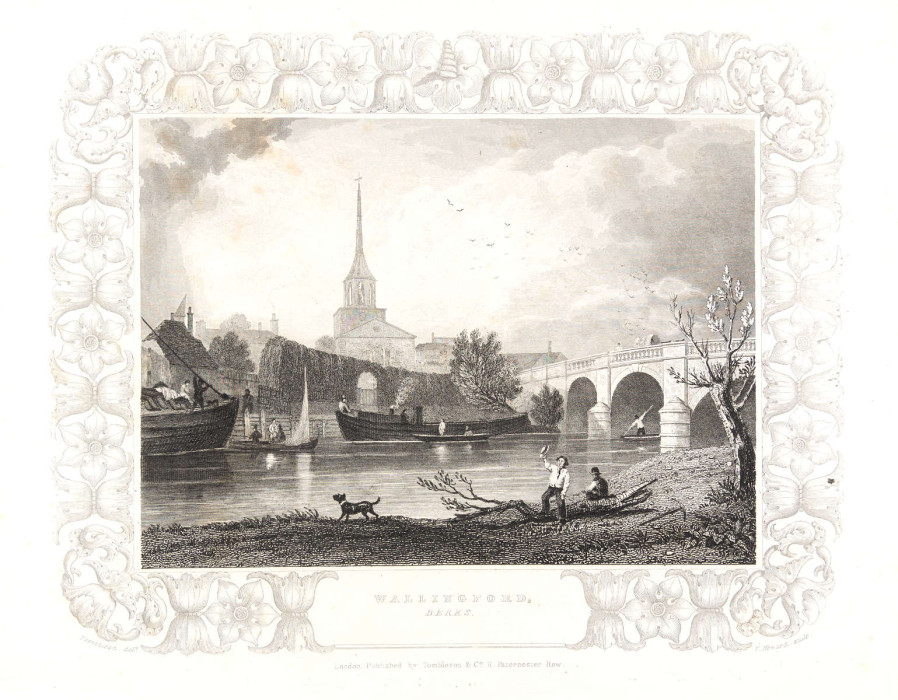
Wallingford, a town on the River Thames, was one of the richest towns in the country in the middle ages. Its wealth and importance resulted in the one of the best sets of medieval borough records, which is of great importance to historians. The archives came to us through various separate deposits from 1949 onwards. Most of the material deposited before 1974 was catalogued in the 1950s and 1960s (collection W/), and the catalogue was something of an anomaly on our shelves, as it was bound as a hardback book rather than in the binders visitors will be familiar with. Unfortunately, the pages were not all in alphabetical order of reference which made it difficult to add additional material to. This was particularly problematic when a significant amount of material arrived after the local government reorganisation in 1974, and remained uncatalogued records for some time. Around 25 years ago it was decided that the solution would be to make records later than 1834, when the borough was reformed, a separate collection, catalogued as WA/ instead of W/. We catalogued the minutes and agendas, rating records, and building control records under that reference.
Lockdown gave us the opportunity to spend time typing up the old catalogue so that it could be copied into our CALM catalogue database, which made the catalogue accessible online and also allowed us to replace the old red book on our shelves. We have now completed a major project to fully catalogue all the outstanding deposits of Wallingford Borough records, both in W/ and WA/ collections. To celebrate this completion, and indeed the collection itself, we are showcasing both old and new highlights of the archive in a series of articles.
A medieval town
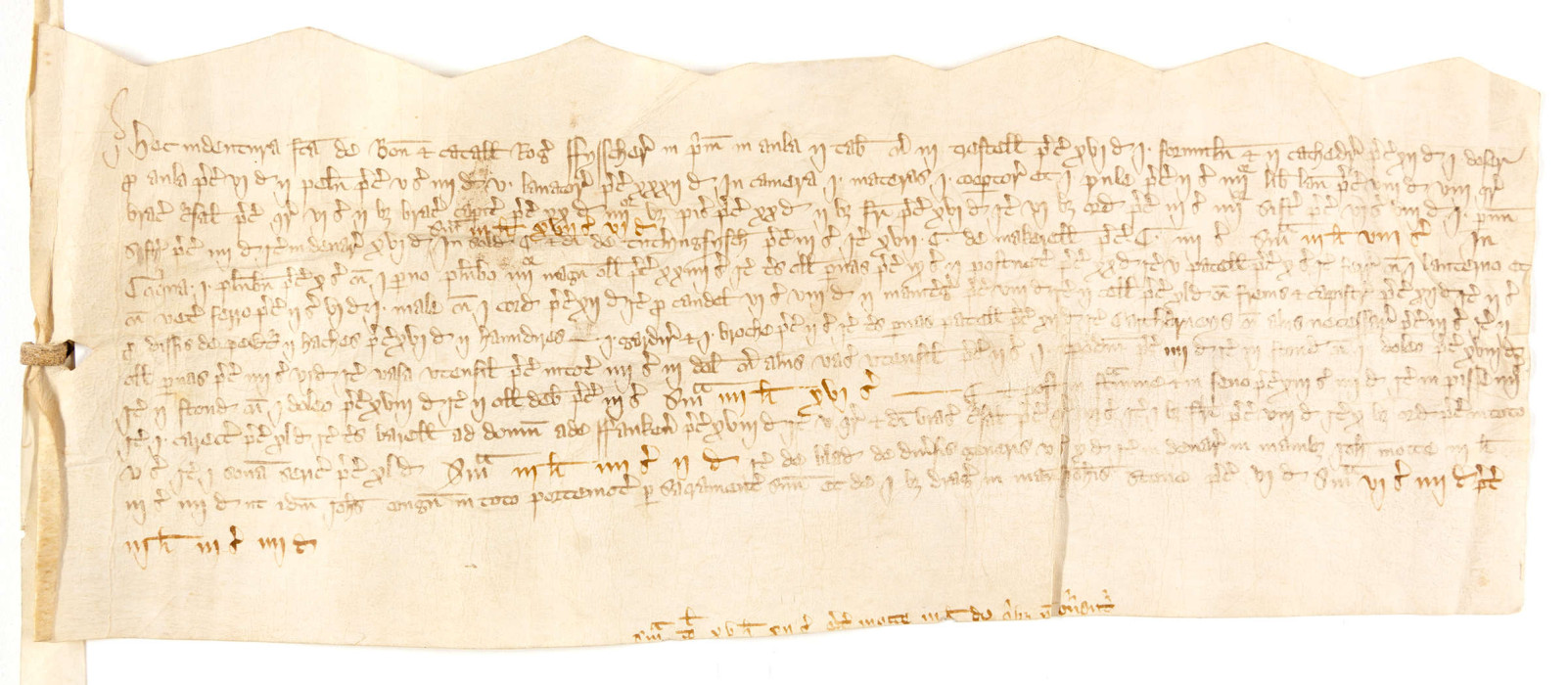
The borough’s medieval documents include the company rolls, 1227-c.1296, (W/FC). These are lists of the male inhabitants of Wallingford arranged by their trades or 'companies'. The tallage rolls, 1229-c.1256, record Wallingford property holders (W/FT). The archive also includes accounts of the borough reeves, 1364-1402 (W/FR). The roll for 1368-9 is attached to an inventory of the chattels (goods) of Roger Fysscher (Fisher – so he was probably a fisherman), which had been seized by the reeves, an image of which can be seen above (W/FR2). Another interesting document comprises bye-laws of the Mercers’ Company, 1677-1669 (W/AG1). Even the council minutes go all the way back to 1507 (W/AC1), although the earliest volume is mainly acts made by the mayor and court records.
A bridge across the Thames
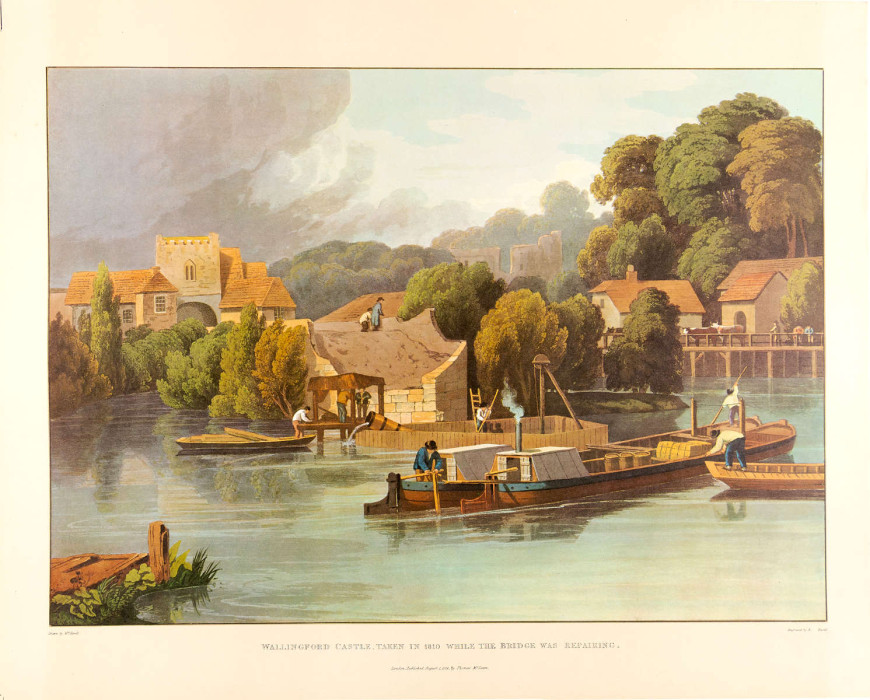
All administrative records relating to the great bridge at Wallingford have been placed in W/AB rather than in WA/. This bridge is of great antiquity, as it was first recorded in 1141 as a simple wooden bridge. The first stone bridge was built for Richard, Earl of Cornwall (the king’s brother) in the 13th century, and some traces of this construction survive today. It was substantially rebuilt in 1530. A drawbridge was added in 1646 during the Civil War siege of the castle. The bridge was repaired and altered in 1751, and again in 1810-1813, following severe flood damage. The mayor and burgesses were entitled to tolls for cattle and carriages passing over the bridge, and for barges passing beneath; these rights were transferred to trustees under the Wallingford Bridge Act 1809, which provided for the repair of the bridge, the trustees including the mayor and aldermen, the high steward, recorder and town clerk, with local landowners and clergymen. The 1809 act authorised tolls for all coaches and wagons, horses, cattle, swine and sheep, and for barges. From 1840 the tolls were leased, providing a more stable income for the borough. Newly catalogued material includes minutes of the trustees, 1809-1843.
The archive also includes the bridgemen's accounts, 1648/9-1835, with just a few gaps and the amount of detail varies at different dates. The later accounts of the chamberlain of Wallingford Bridge cover 1843-1883.
Apprentices and trades guilds and markets
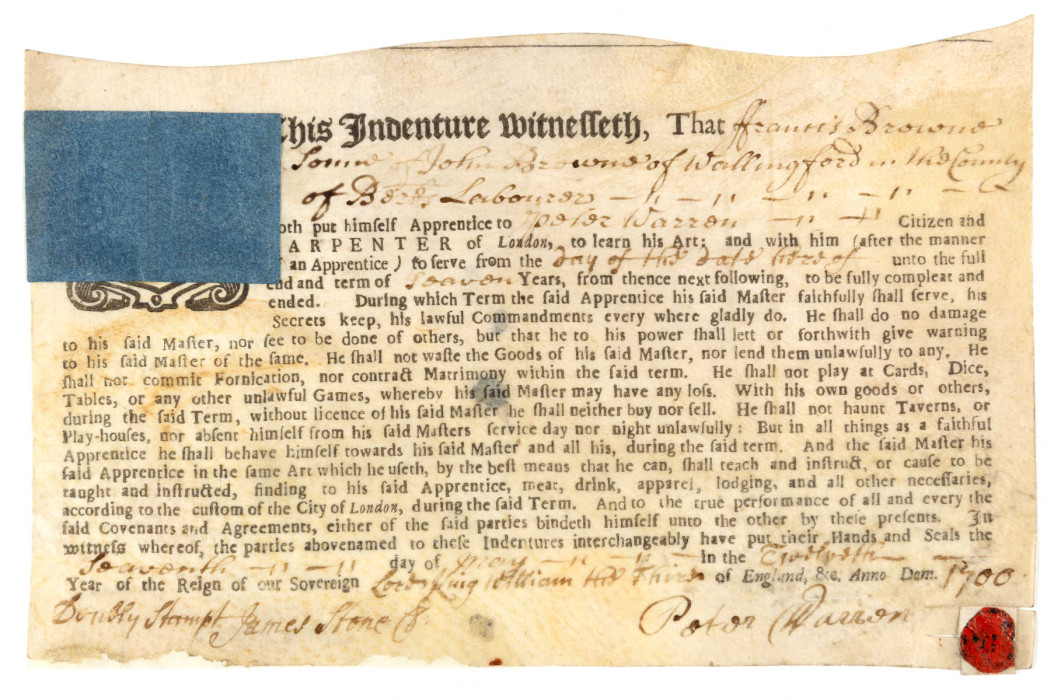
The borough also acted as a repository for deposited records belonging to others, that is, papers held securely for individuals. These include a number of apprenticeship indentures for Wallingford boys, 1610-1711 (W/RA and W/RAA). Some relate to Laud’s charity for the borough, but others were clearly privately arranged, and the documents had been placed with the borough for safe keeping. Several Wallingford boys were sent off to London tradesmen. These records were already available for consultation, but had not been listed in detail. Now all the names are fully searchable in the catalogue.
Records of Wallingford Cattle Market (WA/AZ2) include papers relating to the move to a new site in the 1870s, away from its historic home in the Market Square. This was controversial, and petitions were submitted to oppose the changes. Some of the ratepayers stated, 'we consider such a step quite unnecessary and uncalled for'. Farmers who brought their cattle to sell at the market, mainly from Oxfordshire parishes, thought that the Market Place was the most suitable location for cattle sales due to its proximity to the Corn Exchange and banks, and being 'within easy reach of all the Inns resorted to by ourselves and those we have to deal with'. The tenant of Croft House, Wallingford, objected to the proposed new location at Kine Croft, as he had converted his house there from 'a decayed, and nearly ruined edifice, into a comfortable and somewhat ornamental building' which would be less attractive next to a livestock market’s smells and sounds.
There is also a licence to Joseph and Joseph John Gale of Wallingford, auctioneers, to hold public sales of fat animals (cattle, sheep and swine [pigs]) at their sale yard in Church Lane, Wallingford, in 1883 (WA/AZ2/3). This includes a description of the markings to be applied to animals.
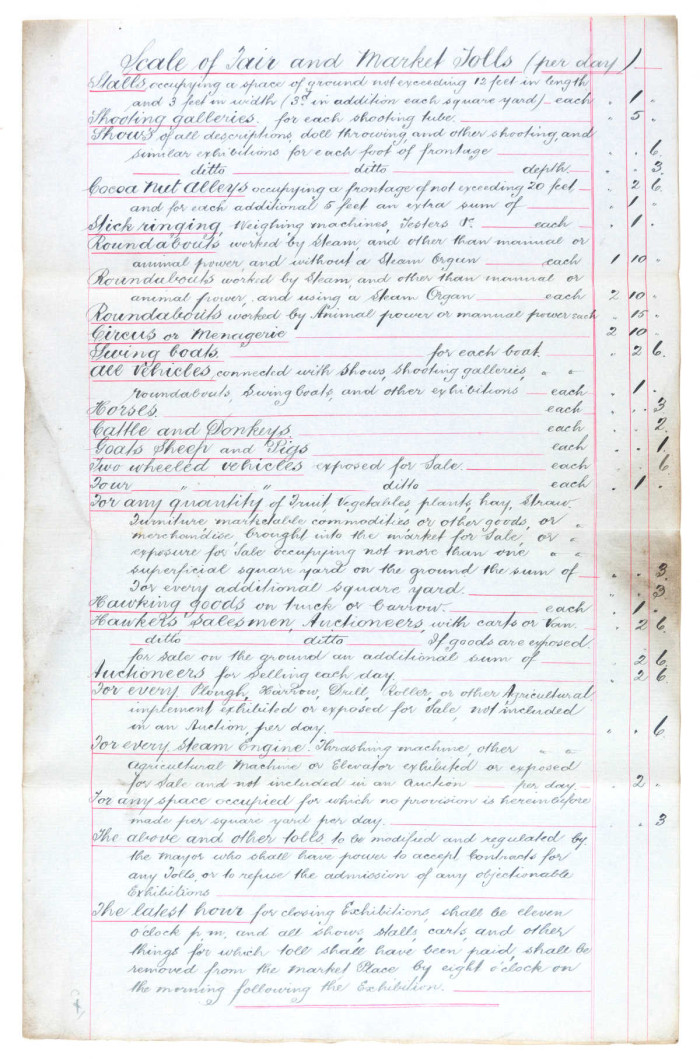
A table of fair and market tolls dated 1893 (WA/AZ2/5) includes specific fees for circuses and menageries, shooting galleries, doll throwing and similar shows, 'cocoa nut alleys', stick ringing, weighing machines, roundabouts, sale of livestock and agricultural produce, steam engines, agricultural implements, etc.
The collection therefore holds a wealth of material showing the development of the town. You can discover more about it in future blogs!
